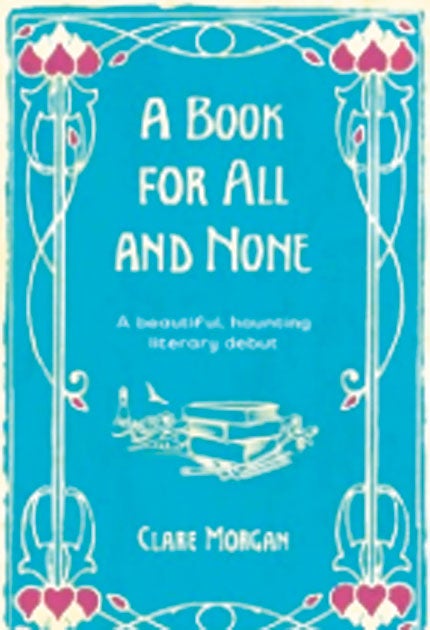A Book for All and None, By Clare Morgan
Moved by a mix of fact and fiction

The art of parallel narratives is one that thrives on juxtaposition, but here's a trio I would never have expected to see: Virginia Woolf, stumbling on the inspiration for To the Lighthouse in a Pembrokeshire village in 1908; the violence of the post-war insurgency in Iraq; and Friedrich Nietzsche in Orta in Italy in 1882, goatishly stroking his moustaches over Louise von Salomé, the young Russian with whom he became briefly infatuated.
What links these disparate events is a pair of academics: middle-aged Beatrice Kopus (a Woolf scholar) and the older Raymond Greatorex (Nietzsche). Beatrice seeks out Raymond for help substantiating her hunch that Salomé, who danced a little around the fringes of the Bloomsbury Group, might have instilled some Nietzschean philosophy in her subject. Estranged from her husband, Walter, who is boss of a dodgy Halliburton-like outfit (thus the Iraq-set sections), she falls into a romance with Raymond and they retreat to his family home, in the hills above Newport, and journey as if on a lark to Orta, to chase down the gloriously unlikely possibility that Nietzsche had carved his and Salomé's initials into a tree trunk.
The great theme of the novel is that paradox of biography: that though the past is immutable to those who lived it, it is only ever available to us as conjecture. No wonder Beatrice's paper on Woolf starts to take on the cadences of fiction. As Morgan states in her acknowledgements, the facts, of Woolf's life especially, are mere counters in a speculative game that is every bit as wild as Walter's ambition to build a Blairishly multi-faith international school in Baghdad.
Some of the various whirling elements could have been trimmed, especially those that try to slip inside the mind of Nietzsche. Woolf is easier, perhaps because she herself set this particular template for fictional characterisation. Sparkling sentences sit alongside muddier passages. Things tighten, though, and as Beatrice, Raymond and Walter's plans come to various kinds of fruition and ruination, Morgan manages that symphonic trick of weaving her parallel narratives into a spell-binding, effortlessly propulsive unity. Symphonies must end, though, and this one chooses, rather doubtfully, to give its final notes to Morgan's over-manipulated factual characters, rather than her rather wonderful invented ones.
Subscribe to Independent Premium to bookmark this article
Want to bookmark your favourite articles and stories to read or reference later? Start your Independent Premium subscription today.

Join our commenting forum
Join thought-provoking conversations, follow other Independent readers and see their replies